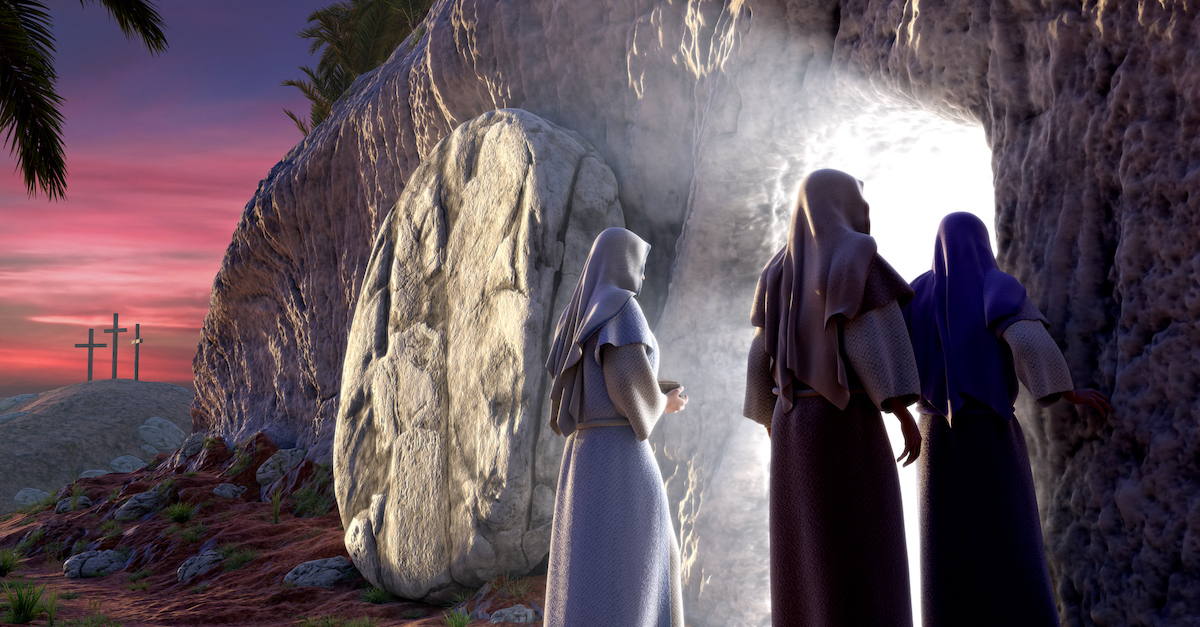Is it Historically Verifiable that Jesus Really Rose from the Dead?

Did Jesus really rise from the dead? As followers of Jesus, this is the most important question we could ever ask, as eternity hinges on the answer.
If Jesus really did rise from the dead, then everything he said was true. He really is the Messiah and Savior of the world. He is God incarnate. He really is coming back to judge the living and the dead, and eternal life can only be found in him.
But if Jesus didn’t really rise from the dead, then he’s just another failed revolutionary among the annals of history. He didn’t overthrow the Roman Empire, and he was gruesomely killed. He was a great moral teacher, but we certainly can’t put our faith in him.
If Jesus died and stayed dead, then we need to look somewhere else for hope in this life and the next.
So, if we are going to place our hope and trust in Jesus, we would do well to respond to this question with a very sober approach. We shouldn’t accept weak evidence or take it on blind faith. We need to be reasonably able to believe that Jesus really did rise from the dead, without needing to check our minds at the door.
Let’s take a look at the evidence:
The Facts Everyone Agrees about Jesus
When talking about Jesus here are four certain facts that any self-respecting ancient historian would agree are true—even if they are an avowed atheist:
1. Jesus of Nazareth was a historically real man who lived in first-century Israel and who amassed a following around his teachings.
2. Jesus was crucified by order of Pontius Pilate at the request of politically influential members of the Jewish community in Jerusalem.
3. Immediately after Jesus was crucified, his Jewish followers claimed that he rose from the dead. This claim served as the basis upon which they formed a Jewish sect centered around the teachings of Jesus.
4. Despite persecution, the movement of Jesus followers grew to include non-Jewish members and went on to become one of the largest and most influential religions in the world: Christianity.
These facts are irrefutable based on the overwhelming historical data that exists. What’s left is to explain what they mean. What really happened in Jerusalem 2,000 years ago?
Here are 5 false presumptions, followed by what we know is true:
False Presumption #1: The Apostles Were Lying
This explanation sets forth that the early disciples were simply lying when they said that their master Jesus rose from the dead. A more charitable version of this explanation claims that maybe they weren’t intentionally lying, but only speaking metaphorically.
The main weakness with this presumption is that the apostles utterly lacked a motive to lie about Jesus’ resurrection. They didn’t profit from sticking to their story. They didn’t become rich or influential in society based on this lie. In fact, they experienced ridicule, imprisonment, beatings, torture, and death for their proclamation of Jesus’ resurrection.
If Jesus’ resurrection was a lie, then it was a lie they were all willing to suffer and die for. And if they were being metaphorical, it seems like it would have been very easy to clear up such a misunderstanding before they were beaten and killed.
Yet we don’t have any account of someone who had claimed to see the risen Jesus ever recanting that claim, even under threat of torture and death.

Photo Credit: ©GettyImages/jgroup
False Presumption #2: Everyone Was Looking at the Wrong Tomb
I suppose it’s possible that everyone was just looking for Jesus in the wrong tomb. When the people saw an empty tomb, they assumed that Jesus was alive. Jesus’ body remained untouched where it lay.
But this presumption begins to fall apart when we consider that Jesus wasn’t buried in an unmarked grave or an unassuming tomb. The location of Jesus’ burial was well known, and his body was even guarded by Roman soldiers.
If everyone were looking at the wrong tomb, the Roman officials guarding the tomb would have gladly cleared up any confusion by pointing out the correct tomb with Jesus’ body still inside. But there is no account of any such thing ever happening.
False Presumption #3: Jesus’ Body Was Stolen
Under this theory, Jesus’ body wasn’t lost, but actually stolen from his heavily guarded tomb. Once the disciples had hidden Jesus’ body, they were free to claim that he had risen from the dead.
But this explanation bears the weaknesses of the first two explanations. The early followers of Jesus lacked motive to carry out such a conspiracy, and the conspiracy could have been debunked if someone brought forth Jesus’ body, or if at least one early follower admitted to lying when threatened. However, we have no evidence that anyone ever did either of those things.
Furthermore, the expressed purpose of having the Roman guards outside of Jesus’ tomb was to prevent any attempt to steal Jesus’ body, since he had predicted his own resurrection (Matthew 27:62-66). And the Roman guards weren’t running a rinky-dink operation. They were highly trained in combat and military strategy.
So it doesn’t seem likely that a couple of fishermen and a tax collector would have snuck past them to pull off history’s greatest heist.
False Presumption #4: Jesus Never Really Died
This is often called the “Swoon Theory.”
In this explanation, Jesus didn’t actually die on the cross, but only fainted (or swooned). After he was placed in a tomb, he awoke, removed the stone blocking him in, and emerged to claim he had been resurrected.
What this explanation fails to take into account is how gruesome crucifixion is, along with how effective the Romans were at executions. But even if Jesus had survived a scourging, hanging on a cross, and a spear in his side, it’s highly unlikely that he would have the strength necessary to remove the stone in front of his tomb from the inside. And when I say stone, what I mean is a boulder that would require the strength of at least two healthy men to move.
If Jesus had miraculously survived to that point, he surely would have succumbed to his injuries while inside the tomb.
False Presumption #5: The Early Disciples Hallucinated Visions of Jesus
This explanation suggests that since the early followers of Jesus were in such emotional distress after their leader had been killed, that they had hallucinatory visions of Jesus. Not realizing that their visions of Jesus were merely hallucinations, they went on to claim that he had really risen from the dead.
This explanation seems plausible enough if there were only one person who claimed to have seen the risen Jesus. But there were hundreds of people who claimed that Jesus appeared to them, all at once. Hallucinations can happen to individuals who are under stress. But the likelihood that 500 people simultaneously had the same hallucination is slim to none.
Furthermore, within 20 years of Jesus’ death, this claim that Jesus had appeared to a crowd of 500 was already written down and recorded as a historical claim. And as the apostle Paul makes this claim, he mentions that many of them were still living at the time of his writing and could be sought out to verify what they had seen (1 Corinthians 15:6).
The One True Explanation: Jesus Truly Rose from the Dead
To me, the explanation that seems the most plausible is that Jesus actually rose from the dead. That’s why the story spread so quickly. That’s why his followers were willing to suffer and die for proclaiming what they had seen. That’s why the movement of Jesus is still relevant today.
Jesus really did rise from the grave.
And while this explanation certainly seems impossible, it’s actually the only explanation that seems to make sense of all the historical data we have.
Our faith is rooted in verifiable history.
Jesus calls us to a very bold faith. He calls us to trust him. We can trust that he really rose from the dead. The resurrection is a historically verifiable event.
And since that’s the case, we can know that Jesus really is everything that he claims to be. He is the Son of God, the Messiah, our Savior, God incarnate. Life is found in him. And when we place our hope in him, we will not be put to shame (Romans 5:5).
By his wounds, we are healed, and by the power of his resurrection, we have life.
Photo Credit: ©GettyImages/kevron2001


Originally published March 23, 2020.







